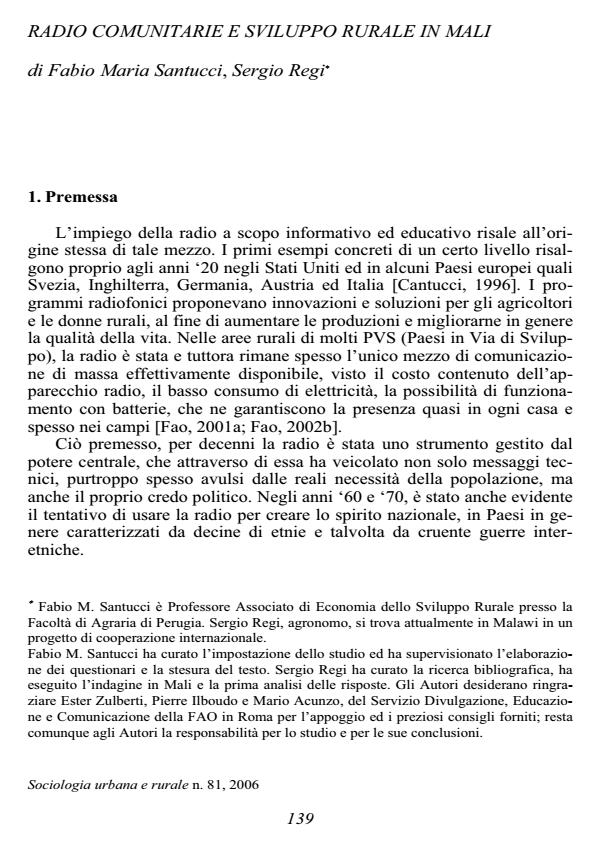Radio comunitarie e sviluppo rurale in Mali
Journal title SOCIOLOGIA URBANA E RURALE
Author/s Fabio Maria Santucci, Sergio Regi
Publishing Year 2007 Issue 2006/81
Language Italian Pages 25 P. 139-163 File size 108 KB
DOI
DOI is like a bar code for intellectual property: to have more infomation
click here
Below, you can see the article first page
If you want to buy this article in PDF format, you can do it, following the instructions to buy download credits

FrancoAngeli is member of Publishers International Linking Association, Inc (PILA), a not-for-profit association which run the CrossRef service enabling links to and from online scholarly content.
Radio has been used since the 1930s as a tool for popularizing all kinds of knowledge, agriculture included, with a substantially top down and centralistic approach, where the messages (either political and technical) were decided at the center (government or public research centers) and then diffused to the audiences. Only during the 1980s’, decentralization and communication for development have became new key words. Decentralization allows and simultaneously requires locally specific messages, while communication for development leads to favor participation and empowerment. Community radios are the most advanced evolution of this concept, because they are owned and managed by the communities, sometimes also in rural areas, to favor the elaboration and diffusion of information needed by the communities. In this paper, four rural community radios operating in Mali have been studied, all established within the framework of a FAO Project. The study reveals a composite picture: all radios are perceived by the people as an essential instrument and they receive a very high level of appreciation, although management and administration are not always optimal. Agricultural programs, although relevant, are not those most listened, because people prefer music and general news.
Fabio Maria Santucci, Sergio Regi, Radio comunitarie e sviluppo rurale in Mali in "SOCIOLOGIA URBANA E RURALE" 81/2006, pp 139-163, DOI: